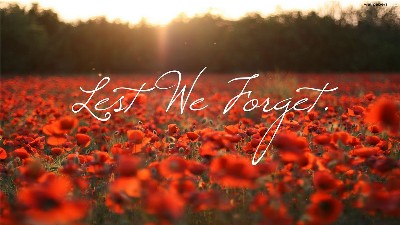Today we Remember

In November Britain, France, Australia, the United States and Canada honor veterans and the men and women currently serving in the armed forces.
While Canada calls it Remembrance Day, Britain has Remembrance Sunday (the second Sunday of November), and the United States, veterans day.
Why November 11th?
On the 11th hour of the 11th day of the 11th month of 1918 an armistice or “temporary truce” was declared between the allied nations and Germany during WW1. The day, then known as Armistice day, became a legal federal holiday in the United States the following year. After WW2 Armistice day became Veterans day.
Why are poppies worn?
In 1915, John McCrae, a Canadian soldier who served in the Second Battle of Ypres in Flanders, Belgium published a poem titled, In Flanders Fields. The poem was written for a friend who died in battle, like many other fallen soldiers, he was buried with a simple wooden cross for a headstone.The poem described fields lush with red poppies, now as mass graveyards filled with the corpses of dead soldiers. McCrae highlights the irony of war, soldiers die so a nation of people can live.
The poem makes poppies a symbol of WW1, the red poppies of Flanders symbolize bloodshed. Out of respect, people lay wreaths of poppies on the graves of those who died at war. We wear red poppies on our lapels as a sign of remembrance. As a mark of respect, people observe a moment of silence at 11.00 a.m. and many hold a special Remembrance Day service, where national anthems are played in honor of war heroes.
Companies have also begun to join in, extending a "thank you" this Wednesday to the men and women who have served in their country's armed forces, offering freebies, discounts and deals.
Experts say, Corporate “goodwill” gestures are increasing, as brands realize they have much to gain by promoting a cause with reach beyond geographic and political boarders.
Does Panama celebrate a Remembrance Day?
In Panama Martyrs Day commemorates riots that took place over sovereignty of the Canal Zone January 9, 1964. The riots started after a Panamanian flag was torn in a conflict between Panamanian students and police officers. The struggle was over the right for the Panamanian flag to be flown in the canal zone. 21 Panamanians and 4 US soldiers were killed. The event is considered significant in the Canal Zone being given back to Panama through the 1977 Torrijos- Carter Treaties.
Trending Tags
